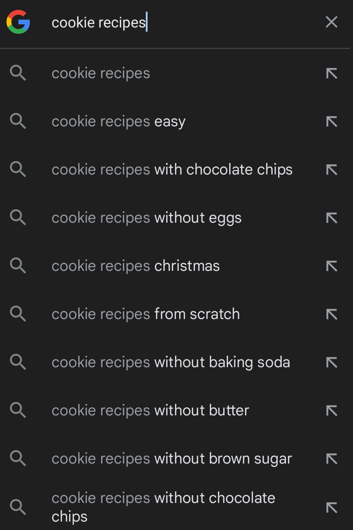Want to attract quality leads that actually turn into clients? First, you have to know how to create a customer persona.
What is a Customer Persona?
A customer persona is a fictional representation of the clients you want. You can base them on ideal clients you’ve enjoyed working with or who you’d enjoy working with in the future. The more you know about them, the easier it will be to create content that gets their attention.
Why Creating a Customer Persona is Important
Suppose you specialize in business law and you’re looking to attract entrepreneurs who want to form limited liability companies (LLCs). You won’t grab their attention by speaking legal jargon and citing case precedents. You must imagine yourself in their shoes and what they must be going through.
Entrepreneurs wear many hats and often fill multiple roles at once. They’re experts in what they do, but they probably don’t have the know-how to create unambiguous contracts and iron-clad operating agreements. They may not even understand the legal ramifications of having a poorly-written contract — until it’s too late.
That’s where you come in. As the owner of your business law firm, you’ve got to show your audience why having an attorney draft or review their contracts is important. However, before you do that, you must understand your audience and how to reach them.
It’s a tall order, but when done well, it gives you a huge advantage over your competitors, who struggle to convey their content in a clear, meaningful way.
How to Create a Customer Persona
Let’s say your favorite client is Alex. If you want to work with more people like Alex, let’s start by learning more about her:
Alex McSample
- Age: 35
- Location: North Seattle
- Occupation: HR Consultant
- Years Experience: 8
- Income: $90,000, but varies year-to-year based on her clients
- Education: Bachelor’s Degree
- Preferred Channels:
- Alex subscribes to several HR magazines and newsletters.
- She enjoys scrolling through Instagram and TikTok.
- Alex uses LinkedIn to find businesses struggling to find and retain talent.
- Business Goals:
- Alex knows that she should switch from her sole proprietorship to an LLC.
- She wants to hit 6-figures next year, requiring her to find $10,000 in more leads.
- She also wants to start a monthly newsletter to stay engaged with her current client base.
- Pain Points:
- Alex just bought a condo with her partner and needs liability protection to safeguard her personal assets.
- Alex understands the benefits of forming an LLC but is intimidated by the legal requirements and is afraid of making a mistake on her paperwork.
- She knows she needs an operating agreement for her business but doesn’t know what that entails.
With this information handy, you now have a good idea of who Alex is. She’s growing her business and realizing that she must form an LLC. However, she doesn’t know enough about them to feel comfortable filling out the paperwork on her own.
You’re most likely to grab her attention on LinkedIn because she uses it when she’s in “work mode.” Since she subscribes to a few HR magazines, you should also consider submitting a few business law-related article ideas to their editors.
Additional Customer Persona Ideas
The more you know about your ideal customers, the better you can tailor content to reach them. Depending on your target audience, consider the following:
- Relationship status
- Family and close friends
- Hobbies and activities
- Religious affiliations
- Ideal vacation
- Favorite Movie, book, show, etc.
A Day in the Life
If you wanted, you could take things a step further and think about Alex’s daily routine. If you’re using social media, blogs, and newsletters as part of your content marketing strategy, this exercise will help you understand when your ideal customer engages with content.
Timeline
Time | Activity | Opportunity |
7:30 – 9a | Alex wakes up, gets ready for work | N/A |
9 – 10a | Alex starts work and scrolls through emails. | Newsletter |
10 – 10:30a | Alex checks LinkedIn before preparing for a meeting | Blog post; LinkedIn post |
10:30 – 11a | Alex has a meeting | N/A |
11a – 1p | Alex takes a deep dive into work. She’s in the zone | N/A |
1 – 1:30p | Alex takes a short lunch. Scrolls through IG and TikTok | IG and TikTok posts |
1:30 – 2:30p | Alex has back-to-back client meetings | N/A |
2:30 – 3p | Alex is responding to emails and checking LinkedIn again | Newsletter, blog post, LinkedIn post |
3 – 5p | Alex takes another deep dive into work, finishes a project | N/A |
5 – 6p | Alex hits the gym or goes for a run | N/A |
6 – 7p | Alex showers, decompresses, looks at IG and TikTok | IG and TikTok posts |
7 – 8p | Alex has dinner with her partner. | N/A |
8 – 10p | Alex and her partner cuddle and watch TV. She’ll occasionally play a game on her phone | N/A |
10 – 11p | Alex winds down, gets ready for bed | N/A |
11p – sleep | Alex reads until she goes to sleep | N/A |
With this info, you know that the ideal times to reach Alex on her workdays are:
- 9 – 10a for newsletters
- 10 – 10:30a for blog posts and LinkedIn posts
- 1 – 1:30p for IG and TikTok posts
- 2:30 – 3p for newsletters, blog posts, and LinkedIn posts
- 6 – 7p for IG and TikTok posts
It’s not an exact science, but this will give you an idea of what content to publish and when.
How to Create a Customer Persona for Law Firms
You should always know who your audience is before you start creating content for them. If you don’t, it’ll be much harder to meaningfully connect with them.
And like Alex, you also have a lot of hats to wear and tasks to accomplish.
Content marketing doesn’t have to be one of them.
Save time, increase visibility, and get your marketing done with Anthony Writes Content.












